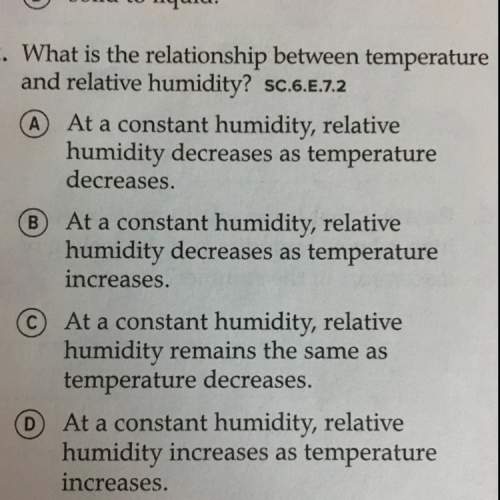
Given the remarkable diversity of bacteria and archaea - and recognizing that there is probably even more diversity that has yet to be discovered - describe which of the prokaryotes catches your interest and why. For example, are you fascinated by the ones that are beneficial, or are the pathogens more interesting to you? Do you ponder whether Archaea might give clues to the origins of life, or are you more interested in the prokaryotes that keep our planet healthy? Did any of the prokaryotes highlighted in the activities particularly surprise (or amaze) you?

Answers: 3


Another question on Biology


Biology, 22.06.2019 02:00
Bisphenol a (often called bpa) is a chemical found in products that people use every day, from water bottles to food containers to children's toys. unfortunately, bpa leaches out of its many products and makes its way into our bodies. what are the health effects of bpa exposure? ongoing research is finding that elevated exposure to bpa can affect a wide variety of developmental and physiological processes, but one of the first studies of bpa's health effects came about because of a simple mistake in the lab. at a laboratory at case western reserve university in 1998, geneticist patricia hunt was making a routine check of her female lab mice. as she extracted and examined developing eggs from the ovaries, she began to wonder what had gone wrong. she noticed that many of the eggs showed problems with their chromosomes, and some had irregular amounts of genetic material, which can lead to miscarriages and birth defects in mammals. she learned that a lab assistant had mistakenly washed the plastic mouse cages and water bottles with a harsh soap, releasing bpa from the plastic. knowing that bpa is an endocrine disruptor, a chemical that can enter organisms and mimic hormones, hunt set out to discover whether it had adversely affected her mice.
Answers: 2

Biology, 22.06.2019 09:00
Which two criteria must be met before scientist can use radiocarbon dating? explain your answer
Answers: 3

Biology, 22.06.2019 17:20
Protein and polypeptide sequences can be determined by first partially hydrolyzing the protein or polypeptide followed by amino acid sequencing of the fragment pieces using the chemical degradation process known as edman degradation. determine the sequence of the initial (18-amino acid) polypeptide that produces the following five partial sequences after hydrolysis and edman degradation.
Answers: 1
You know the right answer?
Given the remarkable diversity of bacteria and archaea - and recognizing that there is probably even...
Questions


Mathematics, 03.10.2020 01:01




Social Studies, 03.10.2020 01:01


Chemistry, 03.10.2020 01:01


World Languages, 03.10.2020 01:01




Mathematics, 03.10.2020 01:01

Chemistry, 03.10.2020 01:01

Mathematics, 03.10.2020 01:01

Mathematics, 03.10.2020 01:01



English, 03.10.2020 01:01




